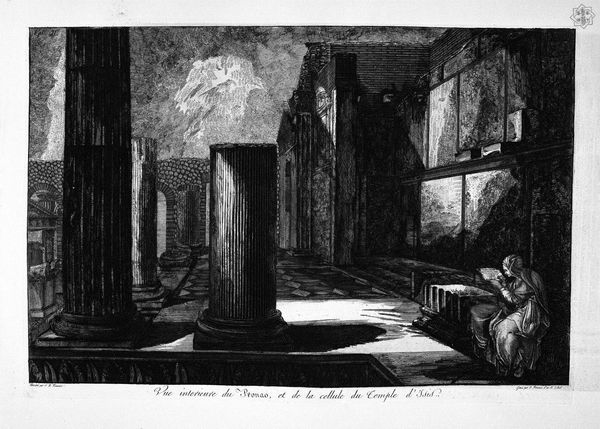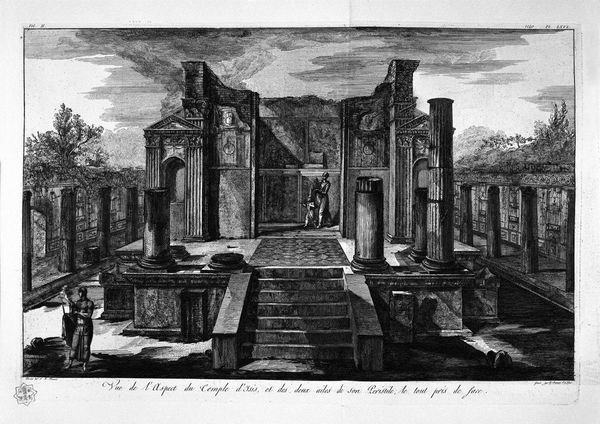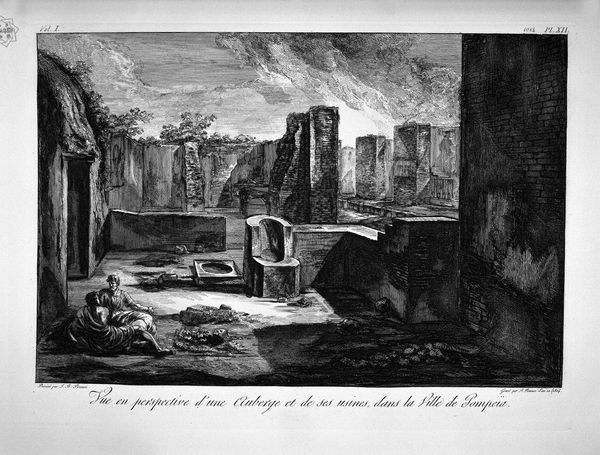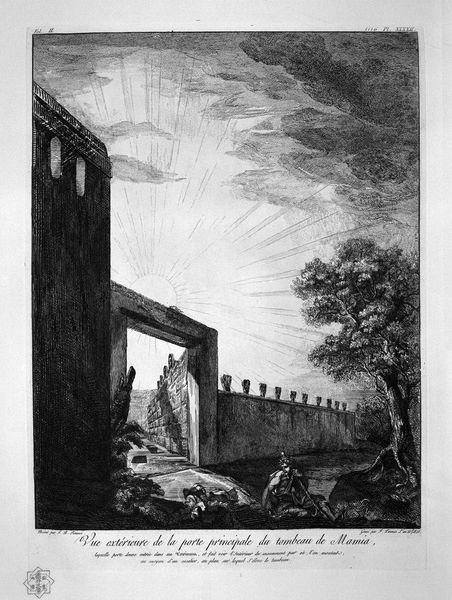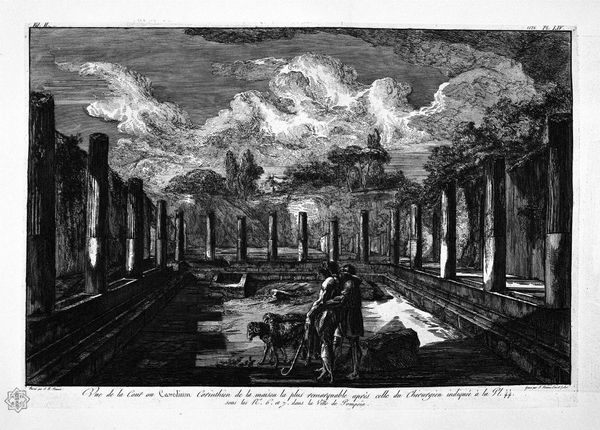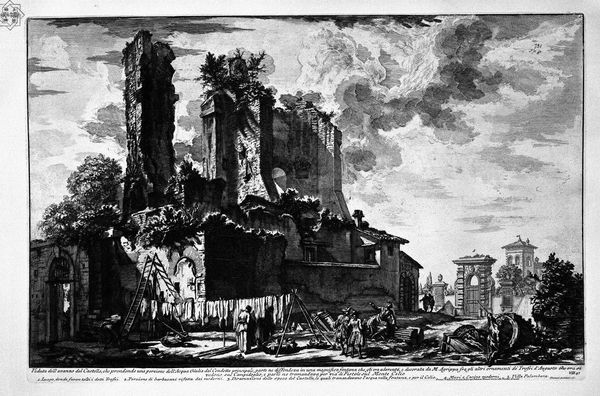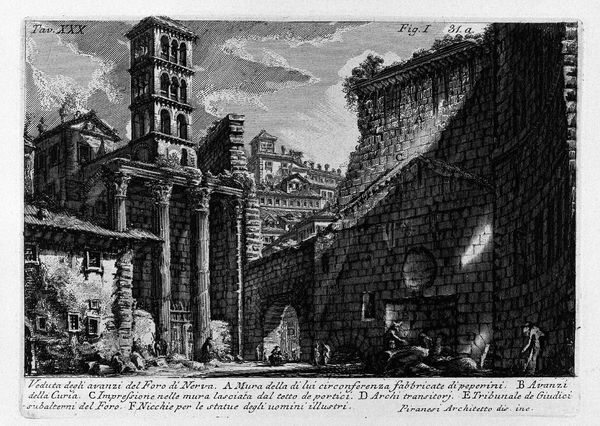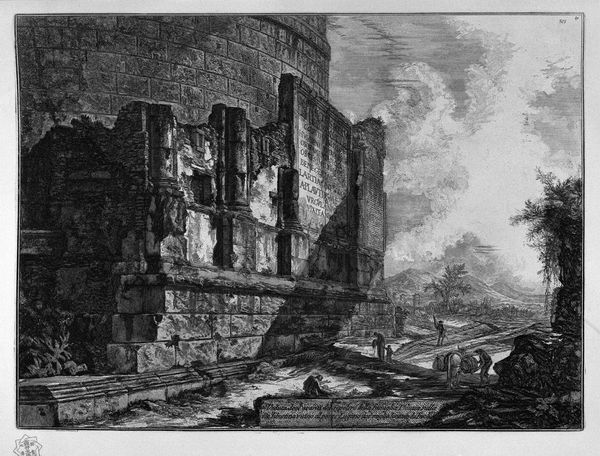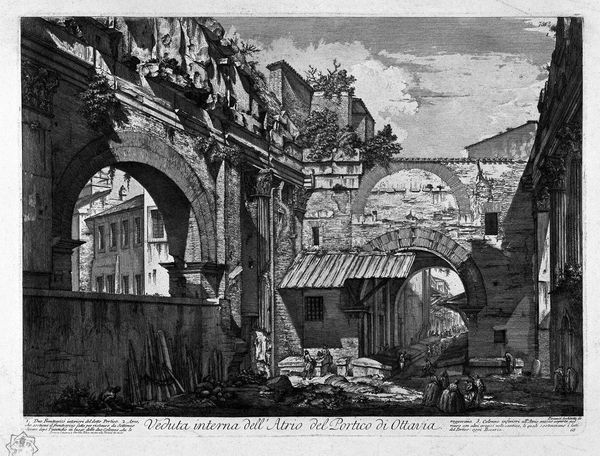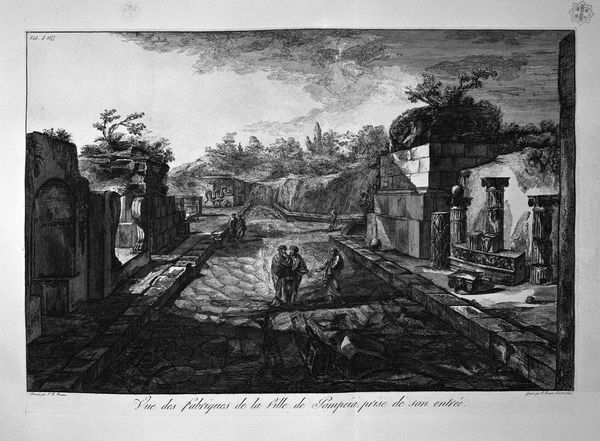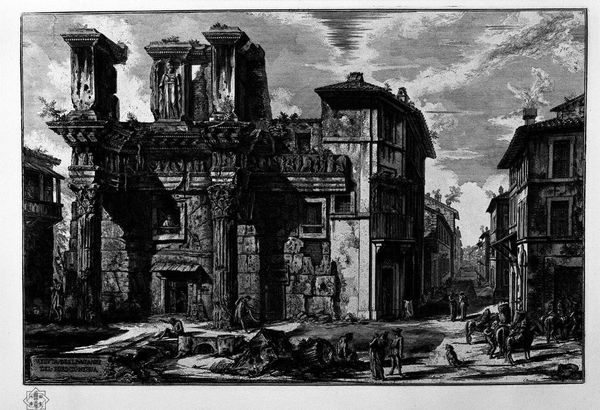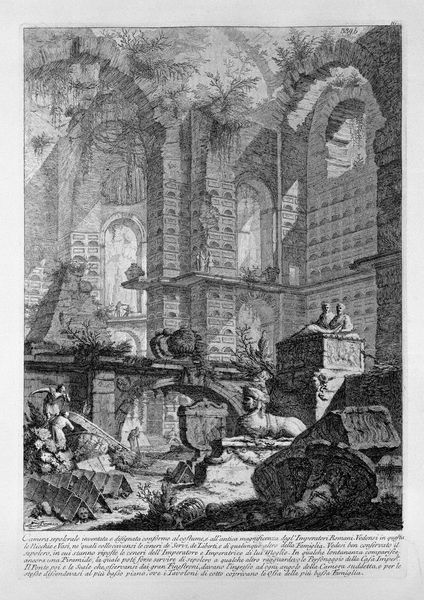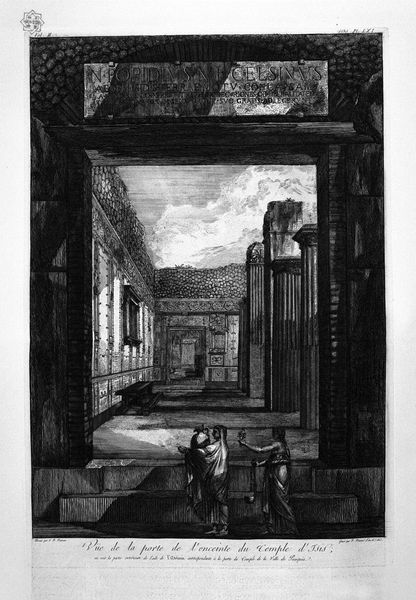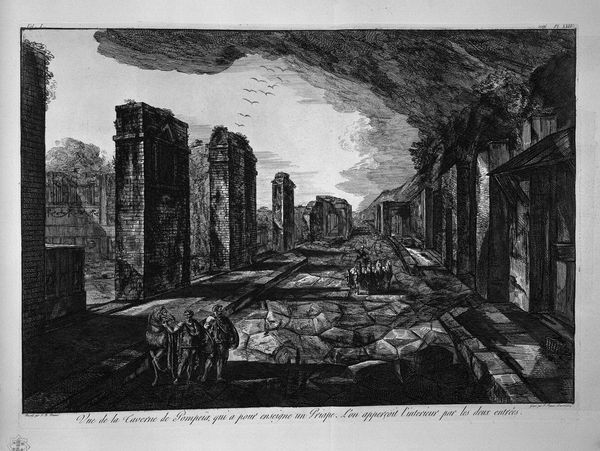
drawing, print, etching, intaglio, engraving, architecture
#
drawing
# print
#
etching
#
intaglio
#
sculpture
#
landscape
#
romanesque
#
geometric
#
ancient-mediterranean
#
column
#
black and white
#
surrealism
#
engraving
#
architecture
#
statue
Copyright: Public domain
Curator: We're now looking at "Cornerstones of the Same Gateway," an intaglio print by Giovanni Battista Piranesi. He was a master of etching and engraving, creating these incredible architectural fantasies in the 18th century. Editor: Oh, wow. It feels like a stage set for a dream – or maybe a nightmare? There's something unsettling and majestic about it all at once. Curator: Precisely! Piranesi's technique is central here. The way he uses light and shadow – look at the deep blacks achieved through the etching process, creating such dramatic contrast and depth. Notice how he blends real architectural elements with his imagined embellishments. This really challenges notions of what is "real" versus what is fabricated. Editor: I'm drawn to the decay, you know? Those crumbling columns, the suggestion of ruins. It’s as if he's presenting us with the ghosts of a civilization, making it all look both monumental and fragile. Like these colossal pillars will collapse in a blink of an eye, any moment now. Curator: Absolutely. This piece also has socio-political relevance. Think about 18th century society and the rise of the "Grand Tour". Wealthy Europeans would travel to places like Rome to collect artifacts, which was seen as an indicator of their refined status. Piranesi cleverly provided easily transportable artwork in this period of archaeological plundering. Editor: So it’s almost like he’s both celebrating and critiquing this obsession with the past. Reproducing these antiquities, these icons of refined taste, to make profit, and yet imbuing them with his own artistic vision... it is so complex, this dance. Curator: He’s inviting us to engage with how history is constructed, reinterpreted, commodified... Even down to the labor involved; how prints were produced, sold, distributed… Editor: I’m feeling overwhelmed yet oddly inspired. There’s something almost poetic in Piranesi's creation – the ability to evoke so much from simple lines, light, and shadow. Curator: Definitely! His prints became blueprints for future architecture, stage design, literature and artistic practices, demonstrating a clear relationship between the means of production, its audience and how it informs societal structure. Editor: Makes you question what we are building today and what kind of ghosts we'll leave behind. Thanks for shedding some light on that, pun intended.
Comments
No comments
Be the first to comment and join the conversation on the ultimate creative platform.
